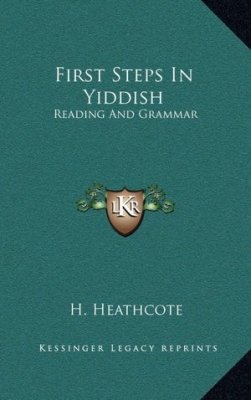Издатель: Kessinger Publishing, LLC,
Год: 2010
ISBN: 1169096638, 9781169096639
Количество страниц: 101
Yiddish (in German, Jiidiah=Jewish) is the language of some six million Jews living in Easte Europe, i.e. in Russia, Poland, Roumania, Austria, and in those Weste countries, as England and America, to which these Jews are continually migrating. It is in the main old High German, influenced by Hebrew and Slavic (i.e. Russian, Polish, etc.) words and idioms. It is estimated that the Yiddish of the present time contains 70 per cent. German, 20 per cent. Hebrew, and 10 per cent. Slavic, words. The arrangement of the words in the sentence is much simpler than in mode German, and more nearly follows the English order. It is almost invariably, written in Hebrew characters, and of course, like Hebrew, read from right to left, the book beginning where an English one ends.
This scarce antiquarian book is included in our special Legacy Reprint Series. In the interest of creating a more extensive selection of rare historical book reprints, we have chosen to reproduce this title even though it may possibly have occasional imperfections such as missing and blurred pages, missing text, poor pictures, markings, dark backgrounds and other reproduction issues beyond our control. Because this work is culturally important, we have made it available as a part of our commitment to protecting, preserving and promoting the world's literature.
Год: 2010
ISBN: 1169096638, 9781169096639
Количество страниц: 101
Yiddish (in German, Jiidiah=Jewish) is the language of some six million Jews living in Easte Europe, i.e. in Russia, Poland, Roumania, Austria, and in those Weste countries, as England and America, to which these Jews are continually migrating. It is in the main old High German, influenced by Hebrew and Slavic (i.e. Russian, Polish, etc.) words and idioms. It is estimated that the Yiddish of the present time contains 70 per cent. German, 20 per cent. Hebrew, and 10 per cent. Slavic, words. The arrangement of the words in the sentence is much simpler than in mode German, and more nearly follows the English order. It is almost invariably, written in Hebrew characters, and of course, like Hebrew, read from right to left, the book beginning where an English one ends.
This scarce antiquarian book is included in our special Legacy Reprint Series. In the interest of creating a more extensive selection of rare historical book reprints, we have chosen to reproduce this title even though it may possibly have occasional imperfections such as missing and blurred pages, missing text, poor pictures, markings, dark backgrounds and other reproduction issues beyond our control. Because this work is culturally important, we have made it available as a part of our commitment to protecting, preserving and promoting the world's literature.

